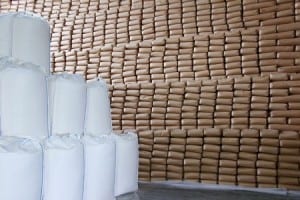
The U.S. Department of Agriculture (USDA) Commodity Credit Corporation announced that it does not expect to purchase and sell sugar under the Feedstock Flexibility Program in fiscal year 2017.
Federal law allows sugar processors to obtain loans from USDA with maturities of up to nine months when the sugarcane or sugar beet harvest begins. Upon loan maturity, the sugar processor may repay the loan in full or forfeit the collateral (sugar) to USDA if prices are too low.
The Feedstock Flexibility Program was reauthorized by Congress in the 2014 Farm Bill as a tool to support prices and avoid sugar forfeitures when there is excess sugar in the marketplace. USDA’s Dec. 9, 2016, World Agricultural Supply and Demand Estimates report (www.usda.gov/oce/commodity/wasde) projects that domestic fiscal year 2017 ending sugar stocks are unlikely to lead to forfeitures. Therefore, at this time, USDA does not expect to purchase and sell sugar under the Feedstock Flexibility Program in fiscal year 2017.
USDA will closely monitor domestic sugar stocks, consumption, imports and other sugar market variables on an ongoing basis, and will continue to administer the sugar program as transparently as possible. The next quarterly estimate regarding the Feedstock Flexibility Program will occur prior to April 1, 2017.
USDA works to strengthen and support American agriculture, an industry that supports one in 11 American jobs, provides American consumers with more than 80 percent of the food we consume, ensures that Americans spend less of their paychecks at the grocery store than most people in other countries, and supports markets for homegrown renewable energy and materials. Since 2009, USDA has provided $5.6 billion in disaster relief to farmers and ranchers; expanded risk management tools with products like Whole Farm Revenue Protection; and helped farm businesses grow with $36 billion in farm credit. The Department has engaged its resources to support a strong next generation of farmers and ranchers by improving access to land and capital; building new markets and market opportunities; and extending new conservation opportunities. USDA has developed new markets for rural-made products, including more than 2,700 biobased products through USDA’s BioPreferred program; and invested $64 billion in infrastructure and community facilities to help improve the quality of life in rural America. For more information, visit www.usda.gov/results.










